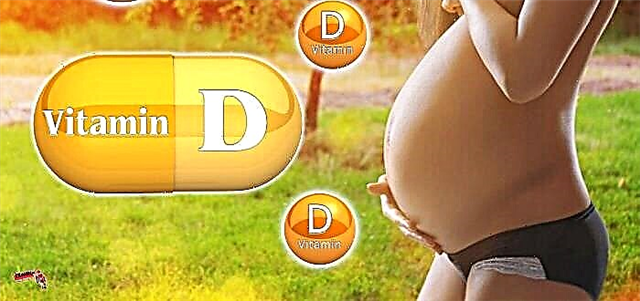
Does the child complain of acute neck pain and almost cannot turn or tilt his head? It is highly likely that he has myositis. This disease has no age range; both adults and children are equally susceptible to it. How to recognize myositis of the neck in a child and how to treat it, we will tell you in this article.

What it is?
Myositis is an acute inflammation of muscle tissue. Cervical myositis is an inflammatory process in the tissues of the muscular frame of the cervico-shoulder girdle. Of all types of myositis, it is cervical that occurs most often.
Most often, the disease develops almost immediately after exposure to the damaging factor, much less often from the onset of inflammation to the appearance of its first symptoms, several days pass.
Myositis in a child can be not only inflammatory, but also toxic, and autoimmune, and even traumatic. If one muscle is drawn into the painful process, they talk about local myositis, if several muscle groups are affected at once, we are talking about poliomyositis.
In childhood, myositis is rarely an independent disease, it is more typical for adults, moreover, with professional risks (pianists, office workers). Usually in children, myositis is a concomitant disease or a complication of another disease - viral or infectious.

Causes
Myositis of the neck muscles in a child can be a consequence of the development of an autoimmune disease, for example, systemic lupus erythematosus or rheumatoid arthritis. Most often, all inflammation of the cervical muscles develops as a consequence of the transferred flu or ARVI, quite often the disease is a complication of an enterovirus infection.
Certain parasites can cause inflammation of the muscles in the neck and shoulder girdle. Also, the cause may be the intoxication suffered by the child - after ARVI, after poisoning with something.
External causes are considered to be injuries and constant neck strain, as well as hypothermia, which occurs most often in children. Even a short stay in a draft is quite enough for a child's neck to hurt.
Children who are professionally involved in sports, in particular swimming, as well as children who are musicians, experience constant tension in the neck and shoulder muscles. Prolonged use of the computer, watching TV in an uncomfortable position, and reading in a lying position can lead to overstraining of the cervical muscles.
And even nervous overstrain associated with the period of exams, the beginning of school attendance, responsible and important events in a child's life can lead to inflammation of the neck muscles and the appearance of painful symptoms.
Symptoms
Much depends on the age of the child. A child of 6-7 years old may well tell his parents in words where and how he hurts, but kids under 3 years old, who are prone to ailment no less than others, will simply be capricious. It is important to consider the signs of a painful condition in time and help the child.
Pain is one of the main symptoms of myositis. It is almost constant, aggravated by movement, many movements become limited, since attempts to turn the head or look up are accompanied by acute sharp pain that does not allow the movement to continue.
An additional sign may be pain on palpation - if the mother tries to touch the baby's neck, the baby will cry and complain when she touches the affected area. His appetite is disturbed, it becomes difficult for him to fall asleep, the temperature may rise.


The affected muscle itself becomes more rigid, tense. It is not difficult to notice this even on a visual examination of the neck. An older child will be able to tell that the pain radiates to the scapula, back of the head or shoulder joint. The kid, naturally, will not be able to tell this.
Quite often, children experience an intense headache, it can be so severe that even jaw movements will be difficult, in which case the child will begin to refuse to eat.
The most commonly observed unilateral myositis, that is, only one part of the neck is affected.


Treatment
The earlier the treatment of cervical myositis in a child is started, the faster it will be possible to alleviate his condition and achieve positive results. There are three main areas of treatment to consider:
- anesthetize;
- immobilize;
- act externally with a therapeutic effect.

This means that first you need to give the neck a stable position so that the child does not have to turn or tilt his head. If the house has a Shants collar, you can use it for soft fixation of the neck. If such an orthopedic device is not available, you can put a warm wide scarf around your neck and gently fix the muscles in the least painful position.
The child must be at rest. It is best to lie down calmly, because each movement will cause a new attack of pain. Pain relievers and non-steroidal anti-inflammatory drugs are used to reduce pain.
Physiotherapeutic methods of influence have also proven themselves well, which well complement complex treatment - this is heating, electrophoresis, exercise therapy at the stage of recovery.
A big mistake would be to warm up the sore neck at the very beginning of the disease, if there is an increased body temperature. Physiotherapy should be started only after the fever has been reduced and the acute pain syndrome has been overcome.
Therefore, first you need to choose pain relievers and anti-inflammatory drugs. To reduce the temperature and partially relieve pain and inflammation, use "Ibuprofen" - this drug is one of the non-steroidal anti-inflammatory drugs and is allowed at any age, subject to the age dosage. Topically, the child can be applied to the skin over the inflamed muscle tissue with an ointment or solution based on camphor and menthol.
Specific drugs should be chosen by the doctor, since many NSAID drugs have age restrictions. They are also available in different forms, with severe myositis, muscle relaxants and anti-inflammatory drugs are prescribed in the form of injections.
Ointments with a warming effect cannot be applied only with purulent myositis, which is not so difficult to recognize - it is always accompanied by high fever, the skin over the affected muscle is hot and pulsating.

The most effective are such ointments as "Viprosal", "Vipratox", as well as "Fastum gel", these funds are always desirable to have in your home medicine cabinet.
Before use, if you are not sure that the child is not allergic to the components of the ointment, a small amount of the drug should be applied to the child on the back of the hand. If after half an hour redness and itching do not appear at the site of application, the ointment or gel can be applied.
Ointments help well with myositis, which arose from hypothermia. Toxic and autoimmune diseases of the cervical muscles require mandatory systemic intake of anti-inflammatory drugs.
At the time of illness, it is important to exclude everything fried, salty and spicy from the child's diet. Raw vegetables are good for you because the high fiber intake helps you flush out toxins faster. The child needs to be watered in sufficient quantities - give at least 2 liters of water per day, and a freshly prepared broth of rose hips will help relieve swelling in the neck area.
An inflamed muscle or muscle group will recover faster if the child receives a large amount of polyunsaturated acids from food. To do this, it is imperative to add salmon, chum or tuna, as well as other fatty fish to the child's diet.
Gymnastics and massage are used already at the final stage of recovery, when severe pains are left behind. The exercises should be soft and gentle, the child should not do them through pain. Massage after myositis can be entrusted to a specialist, or you can do it yourself, the main thing is that the child does not experience pain and does not notice deterioration after massage sessions. Deep kneading in massage technique after inflammation of muscle tissue is not used.

Treatment of cervical myositis in children may take several days, and may require a longer period - up to 1 month.
Prevention
Prevention of myositis is to eliminate all risk factors that can provoke the disease. Do not allow your child to spend too much time at the computer, make sure that while playing games, watching cartoons or doing homework, he sits correctly, monitors his posture.
The baby should have a comfortable pillow and bed. Too hard bed, as well as too soft, will only contribute to the disruption of the functional location of the spine, muscle tension and the development of myositis.
A child who plays sports that does not require excessive exertion is less prone to myositis than children who lead a sedentary lifestyle and children who are involved in professional strength sports.


If a child is playing the violin or piano, it is imperative to make sure that rehearsals and classes alternate with a change of activity so that it is possible to remove muscle clamps in the neck and shoulder girdle.
Parents should promptly treat the child for colds and other diseases, exclude the baby from being in drafts.
The child's nutrition must be balanced, it must necessarily include products containing salicylates - beets, carrots, potatoes. Do not forget about protein foods necessary for the health of muscle tissue - these are meat, fish, milk, cottage cheese, poultry.

For myositis of the neck and back muscles, its symptoms, treatment and prevention, see the next video.



